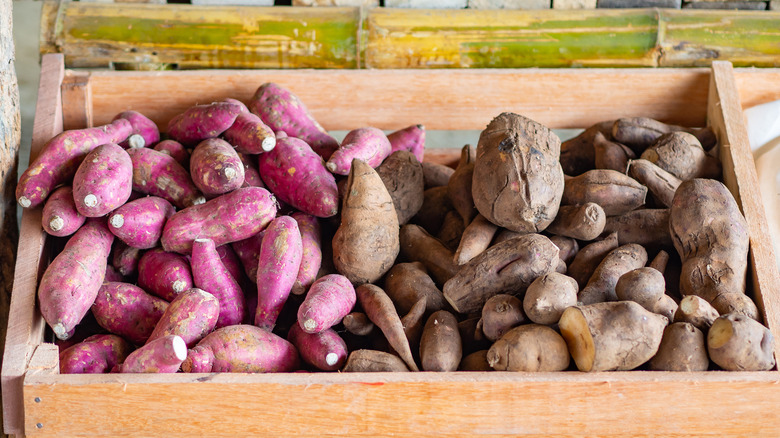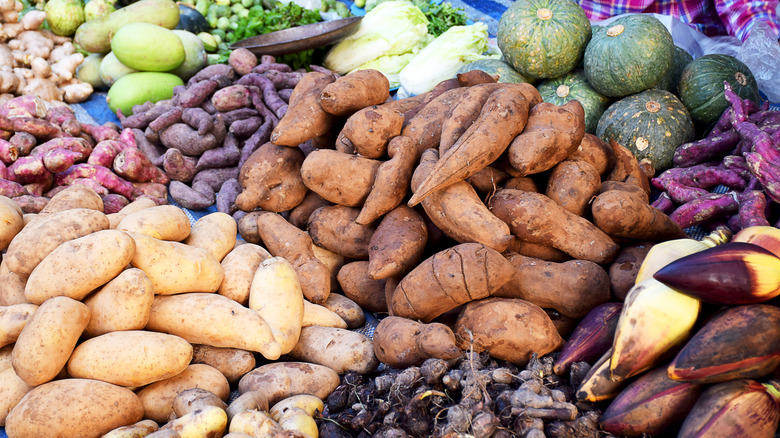Why You've Probably Never Eaten A Real Yam If You Live In The US
While "yam" and "sweet potato" are often treated as synonymous, they are in fact different vegetables. Yams are a different species, Dioscorea batatas. They grow throughout Africa, Asia, the Caribbean, and South America and are starchier than sweet potatoes. They have flaky brown skin and flesh that can come in a wide range of colors, though the most popular varieties are white or yellow.
There's a reason why so many Americans call sweet potatoes yams, though. The word comes from the West African words nyam, enyame, or nyami which were brought to North America by the African diasporsa. Enslaved Africans substituted sweet potatoes for yams, using the old word to refer to the new food. Later, in the 1930s, when the agricultural industry needed a way to market a new kind of sweet potato, they opted to call them "yams," spreading the word to the broader American public.
We're not going to call the police if you keep calling sweet potatoes yams. Merriam-Webster acknowledges that the terms can be used interchangeably, and even the USDA allows it — as long as the word is followed by "sweet potatoes." While it's not uncommon to see sweet potatoes labeled "yams" in American grocery stores, finding actual yams is harder. But, if you're interested in this bit of African culinary history — or simply enjoy trying new foods — it might be worthwhile to seek out the real deal.
Where can you find actual yams?
Finding this elusive root vegetable in the United States might take some (figurative) digging, but it's not impossible. You might find yams in stores and markets that carry Caribbean, Asian, or African foods. The tubers are most popular in Africa, specifically Nigeria, where over half of the world's supply is grown.
Yams are hearty vegetables and don't spoil easily, so if you do manage to find some for sale, just give them a quick once-over for obvious flaws. You can use yams in many of the same ways that you'd use sweet potatoes — roasted, boiled, or fried. You might not want to top them with marshmallows, though, or use them in any recipe that relies on the sweet flavor profile of sweet potatoes.
Consider researching the cuisine of countries where yams are commonly grown, and take inspiration from the recipes you find. In Nigeria, they're made into porridge, fried with eggs, or pounded into smooth balls and eaten with soup. In Jamaica, they're roasted over a fire and eaten with jerk chicken. Chinese yams are cooked into soups or stir-fried with rice and other vegetables.
Of course, you're also free to come up with your own variations. Part of the beauty of the yam is its versatility, as generations of cooks worldwide have found.

